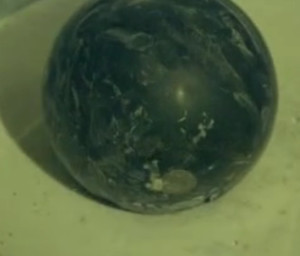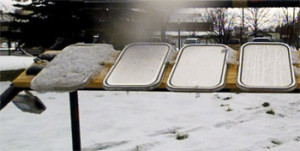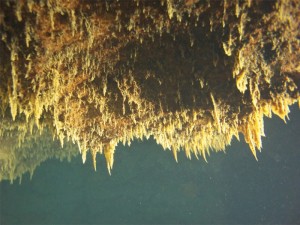 When we check the headlines each day, we’re usually not expecting to read about slime (unless it’s a review for Ghostbusters). But lo and behold, there’s all sorts of slimy news to be found!
When we check the headlines each day, we’re usually not expecting to read about slime (unless it’s a review for Ghostbusters). But lo and behold, there’s all sorts of slimy news to be found!
Slime in caverns, on rooftops, underwater, and more. Read on for our gooey assortment of news related to slime, oobleck, and other non-Newtonian fluids.
If you find an interesting (and slimy) story, please share with us in the comments below!
Non-Newtonian Ants?
Of course live ants aren’t usually related to the topic of slime, but we can’t resist sharing this amazing report! Researchers studying the behavior of fire ants discovered that colonies of ants can flow like a liquid and bounce back like a solid! In other words… Non-Newtonian ants! This video and article are well worth a few minutes of discussion.
Famous American Monuments Getting Slimed?
It sounds like the stuff of horror films: a creeping black slime that can’t be killed? Experts say a real-life microbial invasion is coating some of the nation’s most important monuments in black. In August 2016, the National Park Service (NPS) reported that biofilm has befouled the Jefferson Memorial, particularly its gleaming white rotunda. Biofilm also appears on the Washington and Lincoln Memorials and on tombstones in the Congressional Cemetery. But the mysterious substance—”part algae, part bacteria, part fungi,” according to the Washington Post—isn’t unique to the Washington, DC, area. Biofilm has slimed sites around the globe, from Egypt to Italy to the Angkor Wat temples in Cambodia.
So what is biofilm? It’s a catchall term for a group of microorganisms that come together to form slime. The problem is that there aren’t many studies on the effects of cleaning biofilms from buildings. The NPS is currently testing ten different chemical biocides in small patches. Will they work? Stay tuned to find out more.
 Bowling Ball vs. Oobleck: Who Wins?
Bowling Ball vs. Oobleck: Who Wins?
What happens when a bowling ball is dropped into a pool of oobleck? Researchers looked into the question of why non-Newtonian fluids harden on impact, and their results are fascinating, as reported by phys.org. These scientists set up several different sized tanks of the goo in order to determine whether the results have something to do with energy being transferred to the walls of the container, which is a common theory in the scientific community. The short answer: nope! Read even more in this article by Popular Mechanics.
Watch Out, Santa, There’s Slime on the Roof!
A team of Japanese materials scientists have developed a coating that may eventually be used to combat icy build-up on surfaces such as roads and airplane wings—and even your own house. Their inspiration? You guessed it: slime.
As the photo at left demonstrates, snow sticks to an untreated surface (far left) but slides right off surfaces covered with different versions of an anti-stick coating, which oozes a liquid-repelling substance at freezing temperatures (right three panels).
Read more about this innovative new approach to icy surfaces here.
Enter the Cave of Slime…
In an underwater cave in the Dominican Republic, divers have discovered an astonishing “slime curtain” made from microbial colonies that metabolize nitrogen and iron nutrients and possibly remove pollutants from water.
Learn more here about the rust-colored fronds of slime that cling to the ceiling of a cavern within the Manantial del Toro.




what will happen if you drop a bowling ball in a Oobleck